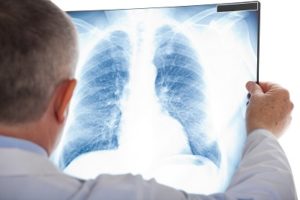
How Is Asthma Diagnosed?
Asthma is primarily diagnosed by a comprehensive history of symptoms in conjunction with a careful physical examination. Blood tests and X-rays are usually not helpful in establishing the diagnosis, but pulmonary function tests (i.e., breathing tests) can be very beneficial.
A constellation of symptoms usually raises the suspicion of asthma. Chest tightness, wheezing, coughing and/or shortness of breath are the classic symptoms of asthma.
Many children wheeze or cough after upper respiratory tract infections (e.g., colds and other viral infections). The wheezing or coughing usually only lasts for a few days. Most of these episodes that occur after viral infections usually become less and less frequent as children get older and they eventually subside. If and when these episodes become recurrent and/or persistent, they are more likely to lead to a diagnosis of asthma.
A family history of asthma, seasonal or perennial allergies (i.e., allergic rhinitis), and/or eczema (i.e., atopic dermatitis), are more likely in individuals who will eventually be diagnosed with asthma.
The amount of air that a person can forcibly blow out of his or her lungs in the first second (i.e., FEV1) depends upon the age and the height of the individual. The normal values for healthy people are established for various age and height combinations. In an individual suspected of having asthma, a pulmonary function test can measure the FEV1 and a computer compares his or her values with what are predicted of a healthy individual of the same age and height.
In many people with asthma, the FEV1 values will be less than 80% of the predicted values based on “normal” individuals. As part of the initial diagnosis, the person may be given a bronchodilator medication to open the airways either through an inhaler or via a nebulizer and the test is repeated after 20 minutes. If there is more than a 12% improvement in their FEV1 value after the bronchodilator, it is highly suggestive of asthma and the person is usually started on asthma controller medications, depending on the frequency and severity of the symptoms.
